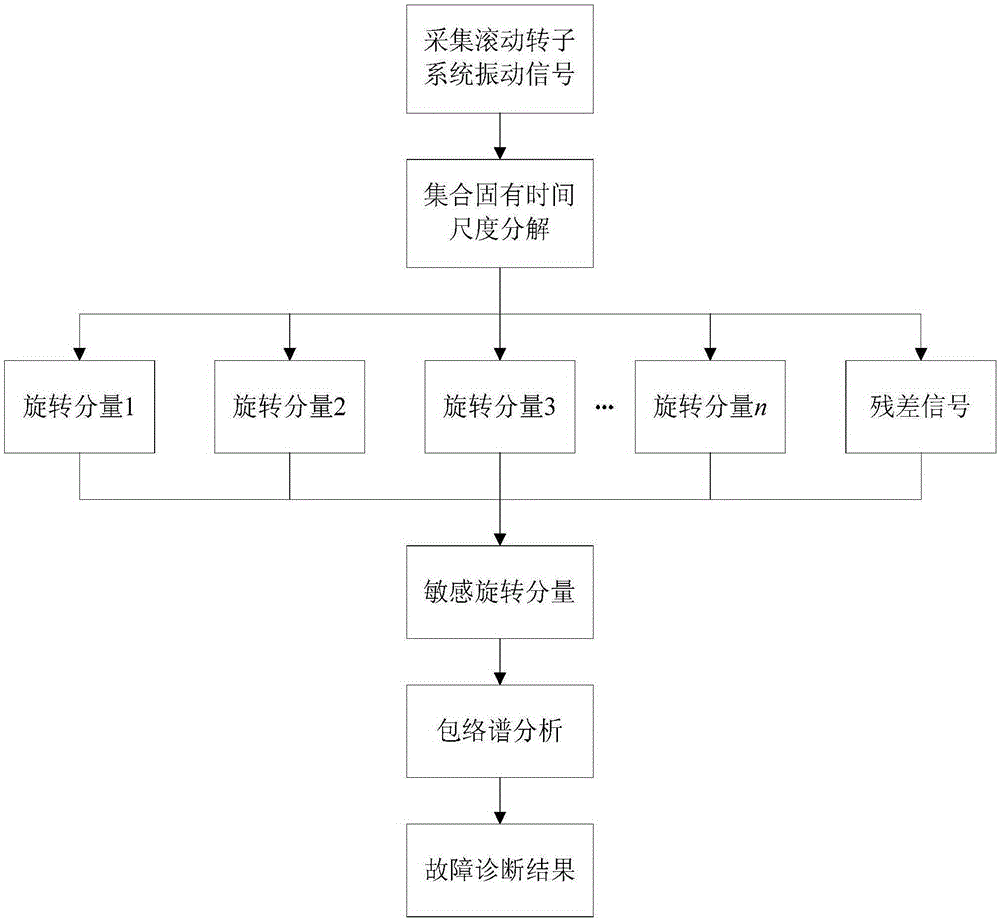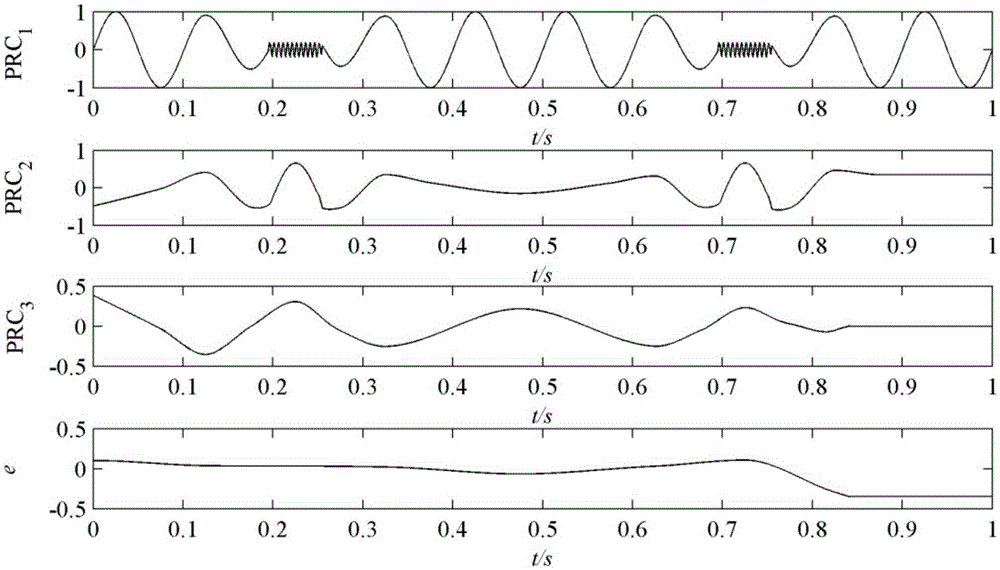Rolling bearing fault diagnosis method based on integral inherent time scale decomposition algorithm
An inherent time scale, rolling bearing technology, applied in computing, special data processing applications, instruments, etc., can solve problems such as total average difficulty, unequal number of rotating components, and increased calculation time
- Summary
- Abstract
- Description
- Claims
- Application Information
AI Technical Summary
Problems solved by technology
Method used
Image
Examples
Embodiment Construction
[0043] A method for diagnosing a rolling bearing fault based on an ensemble intrinsic time scale decomposition algorithm of the present invention will be described in detail below with reference to the embodiments and the accompanying drawings.
[0044] A rolling bearing fault diagnosis method based on the set intrinsic time scale decomposition algorithm of the present invention, such as figure 1 shown, including the following steps:
[0045] 1) Use the displacement sensor to collect the vibration signal x(t) of the rolling bearing;
[0046]2) The vibration signal of the rolling bearing is a non-stationary signal, so the most advanced non-stationary signal analysis method-intrinsic time scale decomposition algorithm is selected to analyze the bearing vibration signal. Like the EMD, the intrinsic time scale decomposition algorithm suffers from the mode aliasing problem. Therefore, the present invention proposes a set intrinsic time scale decomposition algorithm, and uses this...
PUM
 Login to View More
Login to View More Abstract
Description
Claims
Application Information
 Login to View More
Login to View More - R&D
- Intellectual Property
- Life Sciences
- Materials
- Tech Scout
- Unparalleled Data Quality
- Higher Quality Content
- 60% Fewer Hallucinations
Browse by: Latest US Patents, China's latest patents, Technical Efficacy Thesaurus, Application Domain, Technology Topic, Popular Technical Reports.
© 2025 PatSnap. All rights reserved.Legal|Privacy policy|Modern Slavery Act Transparency Statement|Sitemap|About US| Contact US: help@patsnap.com



